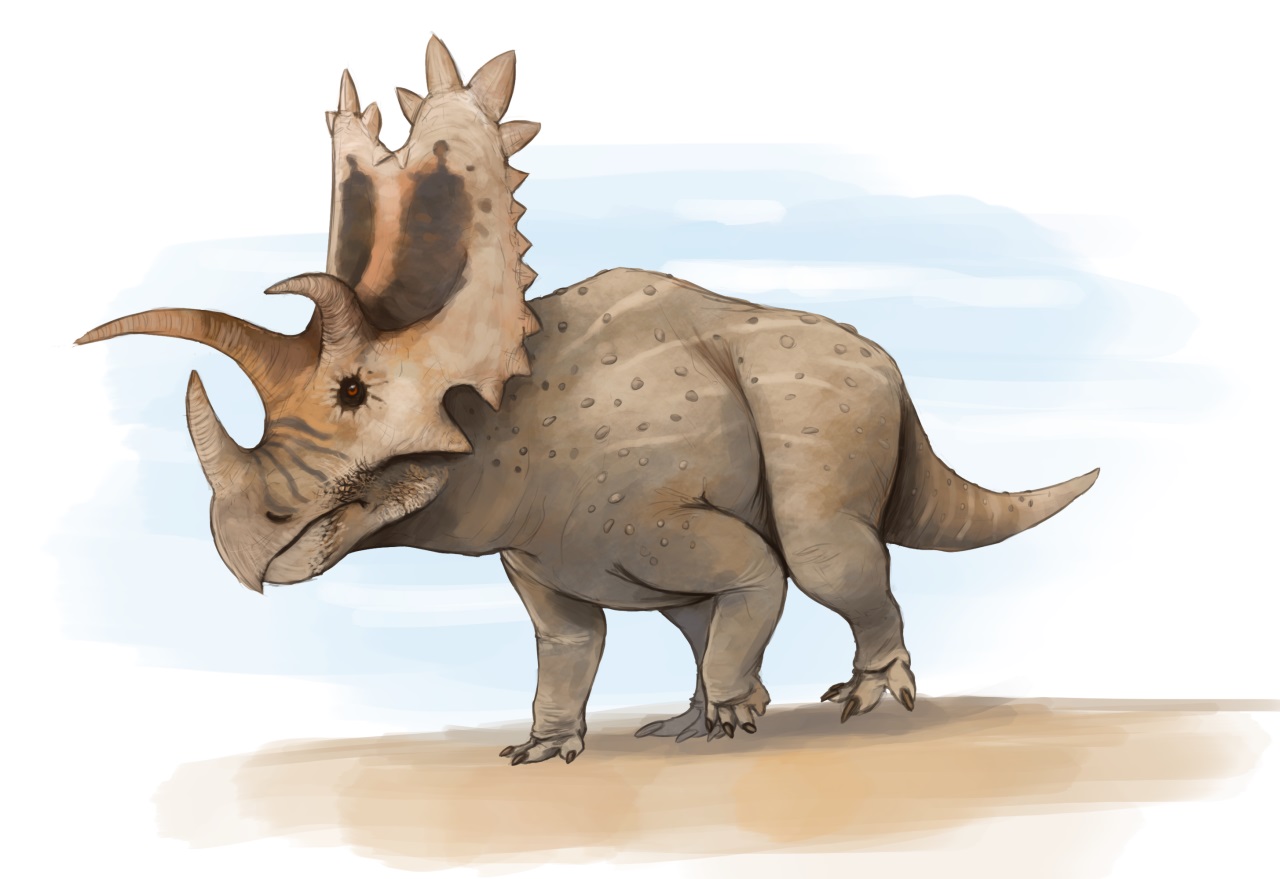
Key Takeaways:
- Pentaceratops, a herbivorous dinosaur with five distinctive horns, lived during the Late Cretaceous period alongside famous dinosaurs like Tyrannosaurus rex and Triceratops.
- Fossil evidence suggests that Pentaceratops may have lived in herds, showcasing social behavior and providing protection against predators during its time in the Late Cretaceous period.
Pentaceratops had five horns on its head.
Pentaceratops, as its name suggests, is known for its distinctive five horns. It had a large horn protruding from its nose and two additional long horns above its eyes. Additionally, it had small horns on its cheeks.
It lived during the Late Cretaceous period.
Pentaceratops roamed the earth approximately 75 to 73 million years ago during the Late Cretaceous period. This makes it a contemporary of other famous dinosaurs like Tyrannosaurus rex and Triceratops.
Pentaceratops was a herbivore.
Unlike some of its carnivorous counterparts, Pentaceratops was a plant-eating dinosaur. Its wide beak and powerful jaws were adapted to feeding on vegetation, such as ferns, cycads, and other low-lying plants that grew abundantly during that time.
It was one of the largest ceratopsians.
Pentaceratops was an impressive dinosaur, reaching lengths of up to 26 feet (8 meters) and weighing around 5 tons. Its large size and robust build made it one of the largest ceratopsians ever discovered.
Fossilized remains have been found in North America.
Fossils of Pentaceratops have primarily been unearthed in North America, specifically in regions that were once part of the ancient landmass known as Laramidia. This includes states like New Mexico, Utah, and Colorado.
It had a frill at the back of its skull.
One of the notable features of Pentaceratops was its elaborate frill at the back of its skull. The frill, adorned with small bony projections, served as a form of protection and may have also been used for display purposes.
Pentaceratops had a massive body.
In addition to its imposing head, Pentaceratops had a bulky body and sturdy limbs. This helped to support its weight and allowed it to navigate its habitat with relative ease.
It belongs to the ceratopsid family.
Pentaceratops is classified within the family Ceratopsidae, a group of large herbivorous dinosaurs characterized by their horned faces and frilled skulls. Other well-known members of this family include Triceratops and Styracosaurus.
The purpose of its horns is still debated.
The exact purpose of Pentaceratops’ elaborate horns is still a topic of scientific debate. Some theories suggest they were used for defense against predators or for intra-species combat, while others propose they may have had a role in display and species recognition.
Pentaceratops may have lived in herds.
Based on fossil evidence, it is believed that Pentaceratops may have lived in herds, similar to other ceratopsians. This social behavior could have provided protection against predators and facilitated mating and breeding.
Overall, Pentaceratops was a fascinating dinosaur with its unique five-horned head, massive body, and herbivorous diet. Its presence during the Late Cretaceous period adds to our understanding of the diverse ecosystems that existed millions of years ago.
Conclusion
Pentaceratops is a fascinating dinosaur species that roamed the Earth during the Late Cretaceous period. With its distinctive five-horned frill, it captivates the imaginations of paleontologists and dinosaur enthusiasts alike. From its size to its behavior, there are several intriguing facts about Pentaceratops that make it a noteworthy addition to the dinosaur kingdom.
One of the most remarkable aspects of Pentaceratops is its sheer size. As one of the largest ceratopsians, it could reach lengths of up to 23 feet and weigh around five tons. Its elaborate frill, adorned with five horns, is another distinctive characteristic that sets it apart from other dinosaur species.
Pentaceratops was a herbivore, feeding on plants and vegetation. Its sturdy beak and powerful jaws allowed it to efficiently graze and consume a variety of plant material. It likely lived in herds, offering protection against predators and enhancing its chances of survival.
While much about Pentaceratops remains a mystery, the fossils that have been discovered provide valuable insights into the world of dinosaurs. By studying these ancient remains, scientists can piece together the puzzle of Pentaceratops’ existence and shed light on the unique adaptations that allowed it to thrive in its prehistoric environment.
In conclusion, Pentaceratops is a captivating dinosaur with its impressive horns and size. Its role as a herbivorous giant and its social behaviors add to its allure. The study of Pentaceratops continues to expand our understanding of the rich diversity that once populated our planet millions of years ago.
FAQs
Q: What does the name “Pentaceratops” mean?
A: The name “Pentaceratops” comes from the Greek words “penta” meaning “five” and “keratops” meaning “horned face.” It refers to the dinosaur’s distinctive frill adorned with five horns.
Q: When did Pentaceratops live?
A: Pentaceratops lived during the Late Cretaceous period, approximately 75 million years ago.
Q: Where have Pentaceratops fossils been found?
A: Fossils of Pentaceratops have been primarily discovered in the region of North America, particularly in areas such as New Mexico and Utah.
Q: How large was Pentaceratops?
A: Pentaceratops was one of the largest ceratopsians, measuring up to 23 feet in length and weighing around five tons.
Q: What did Pentaceratops eat?
A: Pentaceratops was a herbivore, feeding on plants and vegetation. Its strong beak and powerful jaws were well-suited for grazing and consuming a variety of plant material.
Was this page helpful?
Our commitment to delivering trustworthy and engaging content is at the heart of what we do. Each fact on our site is contributed by real users like you, bringing a wealth of diverse insights and information. To ensure the highest standards of accuracy and reliability, our dedicated editors meticulously review each submission. This process guarantees that the facts we share are not only fascinating but also credible. Trust in our commitment to quality and authenticity as you explore and learn with us.
